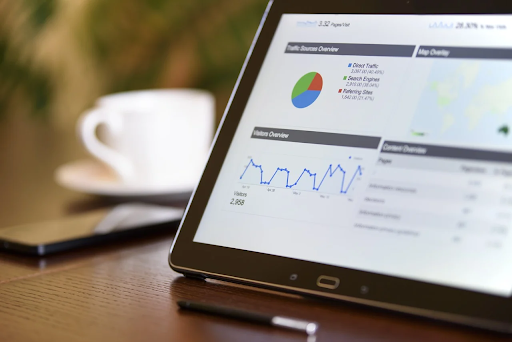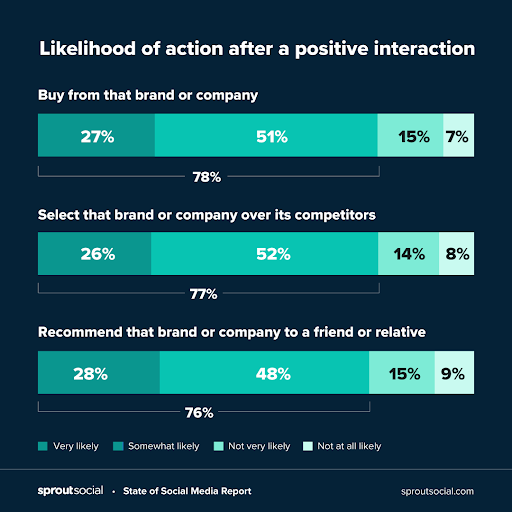
Marketing professionals have numerous factors to keep track of when they devise a new campaign. They start off with creative thought, conduct research to gain relevant insights, then create a long-term strategy to deploy their campaign.
It can be nerve-wracking to watch your campaign’s performance unfold. The success of your campaign depends on client requirements, of course, but there’s no argument that tracking metrics can make or break a campaign, especially if a client has asked for organic results. The ultimate result of all your hard work could be a shouting success or a resounding failure. Marketing metrics will help you determine where you stand.

Free to use image sourced from pixabay.
Table of Contents
Each advertiser plans a campaign with certain end-goals. These can vary depending on the organization, for example if you’re marketing for landscapers, or for a large business with a well-known brand. Digitally driven campaigns usually aim to build brand presence and equity while conventional ones lean towards increasing sales and revenue. Each marketer sets different Key Performance Indicators (KPIs), so no two marketing campaigns will be the same.
A KPI can be any measure of success that a marketeer deems necessary. For example, a brand can prioritize customer service objectives and goals for their new campaign. In this case, a good KPI would be to hit a 100% success rate on successful customer service interactions. If you break it down further, this means ensuring that each customer who calls the brand with a query shuts the phone completely satisfied with the brand’s quality of customer service.
As you can see, a KPI is a specific target that marketeers set to observe certain goals and performance markers. These are targeted benchmarks that have to be laid out carefully and with caution: seasoned marketeers know there’s nothing worse than overestimating success when setting KPIs.
Marketing metrics are a bit of a different ball game. While these are also quantifiable methods used by marketers to track performance, they aren’t specific like KPIs. Marketing metrics may be applied loosely to any stage of a campaign and be indicators for overall campaign health as opposed to measuring tailor-made trackers. There are also social media metrics tools that you can use to monitor the impact of your campaigns.
Some content marketing professionals call these vanity metrics because the large numbers of some of these performance indicators can help make the campaign look good. For example, the views on a Meta video might be utilized to showcase a campaign’s success. However, a large number of views doesn’t necessarily reflect whether it actually made a lasting impact on consumers.

Free to use image sourced from pixabay.
Certain marketing metrics can be crucial to understanding campaign performance, and savvy data-driven businesses use them in addition to KPIs. When applied and studied correctly, marketing metrics give businesses critical insights that help them determine future objectives and campaigns.
Metrics help advertisers understand whether they were successfully able to reach out to their audiences through relevant touchpoints and sell their product or service. Resources like Dialpad’s guide to customer touchpoints and others can give further insights on how to determine these metrics.
Business metrics can also indicate when or if it’s time to pull the plug and halt your campaign. For example, Pepsi had to withdraw and apologize for their offensive advert featuring Kendall Jenner after public outrage in 2017. The creators of the ad film weren’t able to see its potentially inflammatory nature at the time, and only found out after audience feedback through marketing metrics. They recorded viewer sentiment with several tracking tests and ended up retracting the advert in response.
Keep in mind that measurement changes as you progress along the sales funnel. Your marketing team should constantly monitor metrics and know how to apply specific tests to relevant parts of the campaign to measure true insights. Here are some marketing metrics you can use to gather data about your marketing efforts:
It’s essential to be able to demonstrate return on investment (ROI), especially if you want to convince a client to trust your marketing strategy. If you’re running the business, you’d be hard-pressed to invest your money in a plan that doesn’t promise a good ROI. To measure this, marketeers can compare their Customer Acquisition Cost (CAC) with Customer Lifetime Value (CLV). These numbers will help them understand whether it’s too expensive to acquire new customers and how many loyalists the brand has gathered.
If you find that your CAC is inflated while CLV is low, it’s time to change your marketing strategy. Customers you can retain are incredibly valuable. They are more likely to make repeat purchases and can also become unofficial brand ambassadors. For example, sending cold quotes to lots of customers can be expensive, especially if almost none of them become loyalists. Instead, fix your quotation systems and focus on retention, not acquisition.

Free to use image sourced from pixabay.
CR measures how many people visited your website and took a desired action. A successful conversion is when, for example, a customer follows an email link to make a purchase from your online store. They have responded to your outreach, understood your call to action (CTA) and acted on it, increasing your CR.
Measuring your CR helps you understand how to tailor your strategy so it caters to your most important stakeholder: the customer. As a result, this metric is linked with others like the customer satisfaction or CSAT scores.
It’s definitely worth taking the time to improve your current CR. This can also be done using various tests to determine the customer experience. Vigorous testing can help to boost your CR because it would help you make necessary changes.
Smart marketeers would also use a manual QA tester, or several, to check their sales funnel experience. While there’s a lot to be said for automated testing, there are just some bugs that only a human eye can detect, i.e., related to complex nuances like emotion, impact and experience on the website.

Image sourced from sproutsocial.com
This one is particularly important to businesses who want to increase their numbers of loyal customers or smaller brands who rely on word-of-mouth marketing. Your Net Promoter Score (NPS) determines what consumers are saying about your business and how likely they are to recommend it to their family and friends,
You can measure NPS through short surveys sent out through emails, placed at the end of a purchase order or even recorded after customer service calls. Customers are asked about how satisfied they were with their experience interacting with the brand. NPS helps marketers understand whether their strategy is working and which touchpoints to maximize on for improvement.
There’s no one-size-fits-all formula to track this metric, but marketers can use a variety of numbers to help them determine this. ‘Brand awareness’ refers to how much consumers know about your brand and what it stands for. It also tracks how and when your brand is being mentioned and in what context.
Marketeers can use numerous channels to track brand awareness and collect this data to get a clearer picture. SEO is a good way to track where your brand is being mentioned, as well as Google Ads and alerts. There are also programs that will show you sentiment analysis and turn it into quantifiable data so you can measure brand awareness with more accuracy.
![]()
Free to use image sourced from pixabay.
This one is important for digital content advertisers because it helps them determine the success or virality of any given content piece. Digital engagement refers to the amount of people who interacted with your content and there are different ways to track this.
Some marketers use post likes and comments to figure out content success. This can sometimes lead to a false set of results, especially because Meta and Instagram constantly revise their algorithms. A more reliable metric would be to measure the number of times the post has been shared and saved, since these actions show virality and impact. A viewer is likely to hit the like button on almost anything, but they’d be less willing to send it to someone if it didn’t resonate with them.
A data-backed approach is the most successful for businesses because it helps constantly look for feedback from consumers. They also understand the importance of using KPIs and metrics in tandem to get a focused picture of how their marketing efforts are doing. Tracking these metrics enables them to recreate strategies, target different audiences and boost their business health. The best way to do this is through efficient dashboards.
Dashboards allow you to keep all your data in the same place and get the big picture on performance. You can use one program that consolidates all your numbers in a coherent database so you can get constant feedback. You can also add qualitative results in a separate portion to make tracking easy for analysts. This will save you extra time, money and effort and ensure that you’re always aware of your business’ performance.

Jessica Day is the Senior Director for Marketing Strategy at Dialpad, a modern business communications platform that takes every kind of conversation to the next level—turning conversations into opportunities with cloud-based collaboration tools. Jessica is an expert in collaborating with multifunctional teams to execute and optimize marketing efforts, for both company and client campaigns. Jessica Day also published articles for domains such as Women Love Tech and Digital Agency Network. Here is her LinkedIn.
Fred Metterhausen is a Chicago based computer programmer, and product owner of the current version of Maptive. He has over 15 years of experience developing mapping applications as a freelance developer, including 12 with Maptive. He has seen how thousands of companies have used mapping to optimize various aspects of their workflow.
